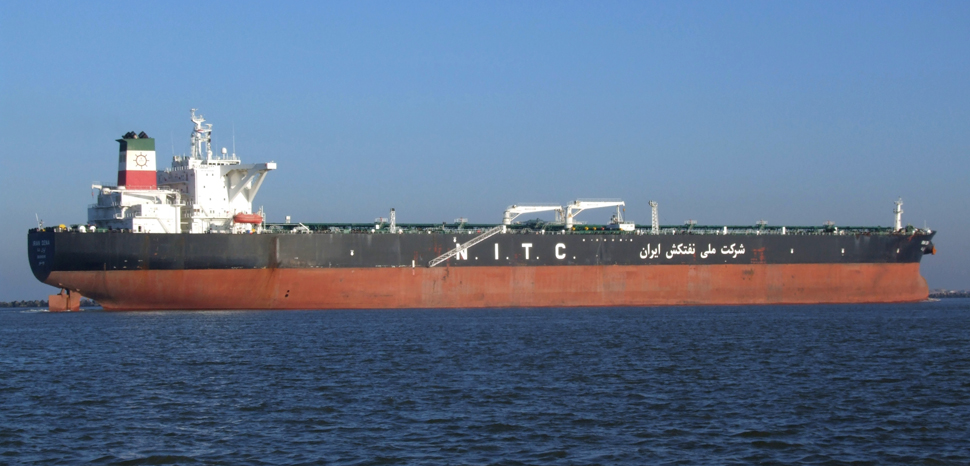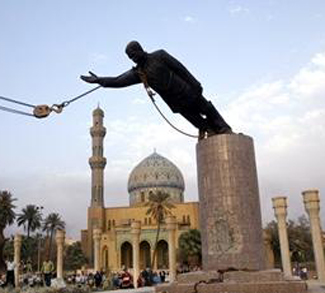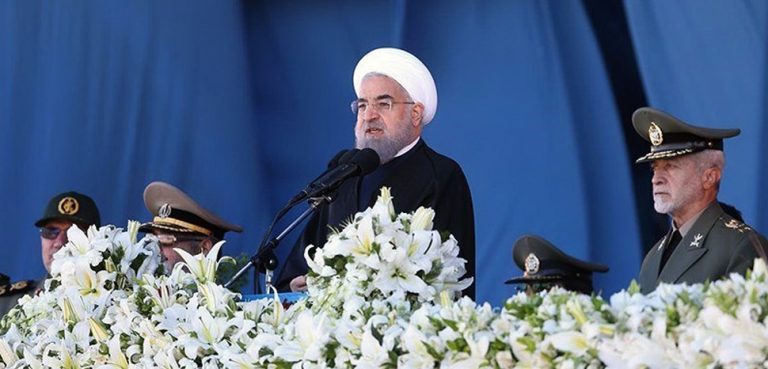While visiting the city of Yazd in central Iran this past November, Hassan Rouhani, the so-called president of the Islamic Republic (IR), proudly announced in a speech that the National Iranian Oil Company (NIOC) has discovered a giant new oilfield with 53 billion barrels (bbl) of oil reserves in Khuzestan province in the southwest of the country. If true, this could be the most sizeable oil discovery in the globe in 2019. Rouhani stated that the reserve from this discovery will be added to the country’s total, which currently is 150 bbl. He emphasized that the country’s dear experts were able to make this substantial discovery despite American sanctions. But he did not mention anything about the cost and duration of field development, or the subsequent trouble of selling the oil, assuming the discovery is genuine.
Shortly after the president’s remarks, the IR’s oil minister Bijan Zanganeh announced by way of SHANA, the NIOC ministry’s news site, that this present oil discovery with 22 bbl of oil is on top of the Namavaran oilfield which, according to him, was discovered in 2016 with 31 bbl of oil reserves. Therefore, the total oil present in the two fields would be 53 bbl. The next day, the governor of the province of Khuzestan, Golam Reza Shariati, determined that the production of the new discovery will be 11 bbl, and according to him this would be equal to 20% of the total crude that exists in Khuzestan province.
How Real is the Claim?
These contradicting statements by IR authorities, for which there is little substantive evidence, could not possibly be all correct. The announcement by the IR’s minister of the oil industry in particular certainly needs some clarification. It is expected to be technically accurate, unequivocal, and devoid of assumption. No oil companies can put speculative amounts of underground oil or gas on their balance sheets.
In addition, it is geologically impossible to come up with the correct volume of the oil in any reservoir only by drilling one exploratory well in the absence of any appraisal and development wells. Further, the thickness, lateral extensions, porosity, and permeability of the rocks in this reservoir are also unknown at this time. Therefore, until an accurate assessment is made in regards to the quantity of oil in the reservoir as well as the quantity of oil that could be recovered by current technology and tools that are available to the Iranian oil industry, the IR should adhere to the international standard which dictates that the recovery factor in a new reservoir under similar conditions is about 1/3 of the reservoir oil. Hence, at best, probably about 18 bbl oil could be recovered from this questionable discovery. It will take at least a few years of drilling some wells to find the dimensions of the new reservoir, along with a large amount of money and other technical work, before the IR can possibly achieve what it is claiming today. Certainly, the purpose of these claims is to instill hope of a promising future in the Iranian nation which is currently amid a great inflation and recession.
This discovery is reminiscent of one that occurred at the end of the last century when NIOC’s authorities very excitedly announced that an oilfield (which was later renamed Azadejan oilfield) had been discovered near the border with Iraq and contained more than 25 bbl of crude oil. But after a few years of work on that reservoir, it was announced that it had only about 6 bbl of recoverable oil. In later years, the NIOC officially acknowledged and accepted that the Azadejan oilfield is shared with Iraq with 37 bbl of oil reserves. However, according to the NIOC the Azadejan oil field is still under development, and the Iranian share seems to fluctuate whenever the issue is addressed.
Understandably, the productivity of any new oil well depends mainly on its depth and may take a great deal of time and money to develop into a source of income. The IR’s president and the NIOC’s officials should understand that the oil underground, no matter how great in quantity, is useless until they can extract it and make it available to the customers at the end of the pipeline. Further, various reports indicate that this newly discovered crude in the Khuzestan province is of the heavy kind which is usually very costly and time-consuming to process.
However, due to a lack of transparent management, current technological advancements, and outside investments over many years, the Iranian oil industry is in a state of large-scale decline with extensive damage to reservoirs. Neglect of regular maintenance of the oil fields, which the IR has blamed on sanctions, has resulted in further damage to the oil and gas reservoirs.
Corruption and False Promises
The president and ministry of the oil industry of the IR should also acknowledge that despite Iran’s huge hydrocarbon reserves, the country has for many years struggled to meet its domestic fuel needs. Of course, the IR knows the reasons for this and is itself part of the problem. Corruption exists in the whole governing system and is definitely most prominent in the oil and gas organization, which is the source of the largest portion of the country’s income.
For instance, the corruption that is so widespread in the country’s oil and gas industry is a major factor in fuel smuggling to neighboring countries, which is quite rampant and occurs daily. Although it is small scale robbery, certainly in a dictatorial country like the IR, no one can deliver crude oil, gasoline and other products by tankers hundreds of miles to the borders near Iraq, Turkey, Pakistan and Afghanistan without being noticed by the authorities. Iran’s oil ministry responded in its news agency SHANA this past March: “Despite difficulties caused by the economic challenge and sanctions against Iran, the ministry of oil has used all means available to stop the corruption and repetition of stealing the oil revenues that were popular in the past.” Further, a trial took place in the country’s major court in which 13 individuals were charged with embezzling 7.4 billion dollars in one of the nation’s biggest robbery cases. According to the State-run IR News Agency (IRNA), most of the defendants in this trial were chief executives of the country’s petrochemical producers and exporters. Of course, trials like this one which take place very often these days are without doubt fabricated by the IR to mislead the public in response to rising public anger over levels of corruption by governing agents.
Meanwhile, the International Monetary Fund in its report last October mentioned that “Iran’s main export, oil is expected to shrink more near 9.5 percent to the end of 2019.” Further, the World Bank reported that Iran’s economy is getting worse and will shrink by 8.7 percent in 2020. The IR’s supreme leader and its president have issued defiant statements that they are scrambling to replace oil revenue with other sources, and they claim the country can withstand any American sanctions. In general, the oil income has comprised about 80 percent of the IR’s government budget in the past forty years.
The oil minister Bijan Zanganeh is in the habit of delivering inconsistent and fabricated figures whenever reporting about the Iranian oil industry. He has often issued false promises about the nation’s oil and gas discoveries, oil and gas production, petrochemical potential, and new oil refineries. In 2018, he reported that the total gas production in the country was 841 mcm/d, but OPEC put the figure at 650 mcm/d. According to Wood Mackenzie, an energy research and consulting group, Iran’s gas production was at most 635 mcm/d in 2018, and British Petroleum reported 615 mcm/d for the same period.
To be sure, false promises and over-optimism are nothing new in the IR’s governing system, particularly in the IR’s oil industry. A decade ago, in November 2009, the former Iranian Oil Minister Rostam Qasseini announced the signing of a contract with China’s Sinopec for the construction of five new refineries. According to SHANA at the time, Qussemi announced “construction of these refineries will increase the country’s total oil refining capacity from 1.65 million b/d at the present to 3.5 million b/d; these refineries will allow our country not only to meet domestic needs but to be able to export large volumes of refined products.” However, to this date nothing from this deal has been accomplished.
As another example, according to OGJ in May 2012, Iran claimed to have made a discovery of as much as 10 bbl of oil offshore in the Caspian Sea, but “few details have been disclosed.” Various press reports from the IR quoted Iran’s Khazar Exploration and Production Company as having claimed an oil discovery with pay zone thickness of at least 78 ft at a drilling depth of about 7,900 ft in a deep but unspecified water depth. However, it should be mentioned that Putin, the Russian dictator, has jurisdiction over the world’s largest lake, the Caspian Sea. The IR definitely does not have Moscow’s permit to drill even its first exploratory well. Therefore, as it is at the present time, to have oil production in the Caspian Sea is a dream for the IR. In a similar vein, in an interview with RIA Novosti (Russian) in July 2012, IR’s oil minister said that two phases of the South Pars gas field, with an anticipated output capacity of 250 million cm/d of natural gas, would be completed by March 21, 2014. But, as usual, there was no action – just empty promises.
Additional well-publicized examples which further elucidate the chronically corrupt nature of the IR oil and gas industry abound. The Total oil company in 2013 agreed to pay a $398.2 million fine to settle a Foreign Corrupt Practices Act case based on US Securities and Exchange Commission and Justice Department charges of bribery of IR’s oil officials. According to documents presented in court, Total intermediaries in 1995 paid a $16 million bribe to IR Oil Ministry officials for a contract to develop offshore Sirri A and E oil and gas fields in the Persian Gulf. In 1997, several months after Bijan Zanganeh, the current IR oil minister was appointed oil minister by reputedly moderate and reformist President Mohammad Khatami, Total entered a similar arrangement with the Oil Ministry. This time, company intermediaries paid a $44 million bribe for a contract to develop two phases of the aforementioned South Pars gas field. The company was awarded 40% interest in those phases of the South Pars gas field. In another case, during Bijan Zanganeh’s first term as oil minister, Statoil of Norway in 2006 acknowledged the payment of bribes in 2002 and 2003 to Oil Ministry officials to secure a development contract for part of the South Pars gas field. The company paid fines and disgorgements in the US and Norway totaling $21 million and submitted to a 3-year deferred prosecution agreement.
Plight of the Iranian People
This past November, the IR announced price hikes of about 50 percent both for gasoline and for gasoline rationing, which sparked sporadic protests across the country. Of course, immediately the officials promised that the revenue would be used to help needy families. At the same time, the head of the IR’s Plan and Budget Organization officially announced that proceeds from the 50 percent increase gasoline prices would be used to fund additional subsidies for 18 million families, or about 60 million people (as per IR state TV).
However, after killing hundreds, as well as injuring and arresting thousands of protesters, IR security forces gained control of the streets across the country and started to do what they have done for the past forty years. Rather than tending to its own malnourished, ailing, and unemployed people, the IR committed itself to increasing its Revolutionary Guard Corps (RGC) and military budgets, mainly for internal genocide, and to spending the country’s resources on buttressing international terrorism, including foreign dictators. Therefore, assuming the aforementioned new oil discovery in the Khuzestan province is true, the Iranian nation will unfortunately never benefit no matter how much increased revenue the IR derives from it.
The IR is a terrorist organization, one that puts daily effort into destabilizing neighboring countries by financially supporting the militant groups in Lebanon, Iraq, Syria, and Gaza. It also strives to expand its influence in Eastern Asia, Africa, and South America. At home, Iranian people are being forced to cope with a steep increase in prices and further collapse of the value of their money. About eighty percent of the population in the country live below the poverty line and are struggling to afford basic necessities. Unfortunately, this tragedy has led to increased rates of hunger, malnutrition, various sicknesses (including mental health issues), robbery, drug trafficking, drug addiction, prostitution, and suicides.
The views expressed in this article belongs to the author alone and does not necessarily reflect those of any institutions with which the author is associated with or Geopoliticalmonitor.com.




![Deputy Crown Prince, Second Deputy Prime Minister and Minister of Defense of the Kingdom of Saudi Arabia, Mohammad Bin Salman bin Abdulaziz Al-Saud participates in the Counter-ISIL Ministerial Joint Ministerial Plenary Session, at the U.S. Department of State in Washington, D.C. on July 21, 2016. [State Department Photo/Public Domain], https://commons.wikimedia.org/wiki/File:Deputy_Crown_Prince_Mohammad_Bin_Salman_bin_Abdulaziz_Al-Saud_Participates_in_the_Counter-ISIL_Ministerial_Plenary_Session_-_Flickr_-_U.S._Department_of_State_(cropped).jpg Deputy Crown Prince, Second Deputy Prime Minister and Minister of Defense of the Kingdom of Saudi Arabia, Mohammad Bin Salman bin Abdulaziz Al-Saud participates in the Counter-ISIL Ministerial Joint Ministerial Plenary Session, at the U.S. Department of State in Washington, D.C. on July 21, 2016. [State Department Photo/Public Domain], https://commons.wikimedia.org/wiki/File:Deputy_Crown_Prince_Mohammad_Bin_Salman_bin_Abdulaziz_Al-Saud_Participates_in_the_Counter-ISIL_Ministerial_Plenary_Session_-_Flickr_-_U.S._Department_of_State_(cropped).jpg](https://www.geopoliticalmonitor.com/wp-content/uploads/2021/01/Deputy_Crown_Prince_Mohammad_Bin_Salman_bin_Abdulaziz_Al-Saud_Participates_in_the_Counter-ISIL_Ministerial_Plenary_Session_-_Flickr_-_U.S._Department_of_State_cropped-768x369.jpg)